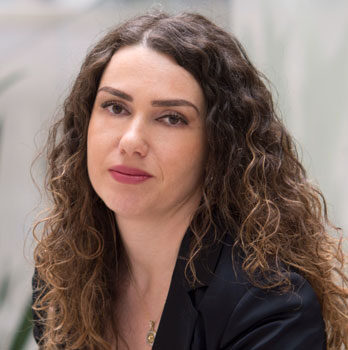
Men newly diagnosed with prostate cancer face a difficult dilemma: either wait and see how the growth develops and whether it is aggressive, or treat it fully right away and risk the many long-term side effects of treatment. Dr. Tamara Jamaspishvili is a young researcher at Queen’s University in Kingston who is working to change that.
There is still no certain way to know how most prostate tumours will develop. For about half of all newly diagnosed men the tumour might be highly aggressive and need treatment right away, while for the other half it might grow so slowly that it may never cause any problems during their lifetime.
The question for doctors and researchers studying prostate cancer is how to identify the half of men who have harmless tumours and spare them from aggressive treatment that can have dramatic long-term side effects.
For patients at the lowest risk levels, actively watching the tumour over time and intervening only when it becomes aggressive is the most appropriate recommendation
Dr. Tamara Jamaspishvili is working in the lab of Dr. David Berman at Queen’s University in Kingston to help solve this problem. She’s part of the PRONTO project, led by Dr. John Bartlett at OICR and funded by Prostate Cancer Canada, which is bringing together researchers from across Canada to better understand and treat prostate cancer. The team is looking to find new biomarkers that would differentiate aggressive cancer from non-aggressive cancer at the time of diagnosis and help clinicians to identify hidden aggressive cancer at a very early stage. This would allow them to give the appropriate treatment for each individual patient.
“For patients at the lowest risk levels, actively watching the tumour over time and intervening only when it becomes aggressive (often called active surveillance) is the most appropriate recommendation,” Jamaspishvili says. “But defining which patients need to receive more radical treatment and which do not need any treatment in their lifetime still remains a challenge.”
Jamaspishvili is working specifically on validating the genes that her colleagues identify as being associated with high-grade cancer. Her work includes organizing, performing and coordinating a pathologic review of the samples across the sites, establishing standardized scoring and quality control systems and constructing high density tissue microarrays that will be a valuable resource for in situ biomarker validation. It’s tough work, but necessary to ensure that the work being done will be effective for patients. “I work to create intuitive algorithms that help us to find the best approach to measure biomarkers in the tissues,” she explains. These algorithms help to prove whether biomarkers are successful in predicting aggressive disease and whether they have potential for clinical use.
Jamaspishvili completed medical school in the country of Georgia and then finished her PhD in pathology in the Czech Republic. She moved to Ontario to further her career as part of a postdoctoral fellowship at the Canadian Institutes for Health Research at Queen’s University.
She’s been very happy with the move. “Ontario provides vast opportunities to pursue and build a high-quality career in cancer research,” she says. “This has been an excellent opportunity for me to translate my knowledge of clinical pathology into research.” She is pleased to be able to work in a setting that combines both her clinical and research experience. “I was always interested in understanding how normal physiological processes turned abnormal, what caused it to happen and how to revert these process back to the normal state to save patients’ lives.”
Now with the PRONTO project, she is working with a team of researchers across Canada in a major effort to do exactly that.

